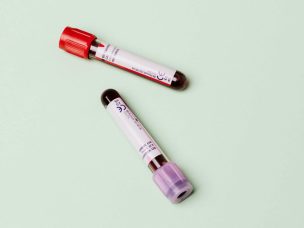Introduction
Once a diagnosis of atrial fibrillation has been confirmed, the treatment goals include the following [1]:
- Restoration of normal cardiac rhythm (rhythm control)
- Reduction of an abnormally rapid heartbeat (rate control)
- Prevention of blood clots and stroke
- Prevention of additional heart rhythm problems
- Preventing heart failure
A combination of risk factor reduction, medication, and targeted medical procedures are employed to achieve the above goals.
Risk factors that can be addressed through lifestyle changes [2]:
- Lose excess weight. Achieving a healthy weight reduces the severity and frequency of atrial fibrillation episodes.
- Reduce the intake of alcohol or stimulants that may increase the heart rate. This includes caffeine in coffee, tea, colas, and some cough medications, as well as other stimulants found in cough medicine and related medications.
- Increase physical activity. A sedentary lifestyle can increase your risk of heart disease and stroke.
- Address the use of street drugs. Cocaine, ecstasy, amphetamines, heroin, and others are associated with an increased risk of stroke.
- Manage stress in your life. Seek mental health counseling if needed.
- Stop smoking and vaping. These can damage blood vessels, causing a stroke. Avoid secondhand smoke when possible.
- Choose heart-healthy foods.
Risk factors that require medical intervention [2]:
- Diabetes
- Hyperthyroidism
- Chronic kidney disease
- Hypertension
- COPD and other lung problems
- Heart valve diseases
Medication [3]
Medications that help prevent blood clots, slow the heart rate, and/or restore normal cardiac rhythm include:
Beta-blockers slow the rate at which the heart’s lower chambers pump blood throughout the body. Rate control is important because it allows enough time for blood to completely fill the ventricles.
(Caution: Beta-blockers should not be taken by people who have COPD, a slow heart rate (bradycardia), or other types of arrhythmias because they may worsen those conditions.)
Calcium channel blockers control the rate at which the heart’s lower chambers pump blood. Patients with pulmonary problems who cannot take beta-blockers may take calcium channel blockers.
Anticoagulants (also known as “blood thinners”) help prevent blood clots, reducing the risk of stroke. These include such popular and well-advertised medications as warfarin (Jantoven), apixaban (Eliquis), and rivaroxaban (Xarelto). Note: These medications also increase the risk of bleeding.
Other heart rhythm medications provide cardiac rate and rhythm control by slowing down a heart that is beating too fast or changing an abnormal heart rhythm to a normal, steady rhythm. Rhythm control is a recommended alternative for people who are not improving with rate control medications. These may be used alone or in combination with electrical cardioversion.
Non-Surgical and Surgical Procedures [4,5]
Your provider may recommend one of the following procedures, especially if lifestyle changes and medicine alone do not improve your symptoms:
Electrical cardioversion therapy – resets the heart rhythm by sending low-energy electric shocks to the heart through the use of paddles or adhesive patches placed on the chest.
Catheter ablation – eliminates the tissue causing the arrhythmia by using heat or cold to cause tiny scars that interrupt irregular signals in the heart with the aim of restoring the heart to a healthy rate and rhythm. Ablation is not always successful and may lead to serious complications, including infection, bleeding, or stroke. To further ensure that the arrhythmia does not return, a pacemaker may be implanted at the time of the procedure.
Implanting a pacemaker – reduces atrial fibrillation when it is triggered by a slow heartbeat.
Surgical maze procedure – creates a pattern, or maze, of scar tissue within the left atrium of the heart to focus the electrical impulses and prevent abnormal impulses from reaching the atria.
The maze procedure can be performed by making incisions in the atria or by using energy sources that create scar tissue by either heating or freezing. These include radiofrequency, microwave, laser, ultrasound, or cryotherapy (freezing). Since scar tissue does not send electrical signals, the maze interferes with the stray heart signals that cause atrial fibrillation.
A surgical maze procedure is the preferred Afib treatment for those who require additional heart surgery, such as coronary artery bypass or heart valve repair. During the surgery, any of the above methods may be used to create the maze of scar tissue.
Sources:
- Atrial Fibrillation Treatment Guide | Cleveland Clinic. (n.d.-c). Cleveland Clinic. https://my.clevelandclinic.org/treatment-guides/14-0081-afib-guide#treatments-tab
- Causes and risk factors | NHLBI, NIH. (2022, November 30). NHLBI, NIH. https://www.nhlbi.nih.gov/health/atrial-fibrillation/causes
- Treatment | NHLBI, NIH. (2022b, November 30). NHLBI, NIH. https://www.nhlbi.nih.gov/health/atrial-fibrillation/treatment
- Atrial fibrillation – Diagnosis and treatment – Mayo Clinic. (2023, July 26). https://www.mayoclinic.org/diseases-conditions/atrial-fibrillation/diagnosis-treatment/drc-20350630
- Atrial Fibrillation Treatment Guide | Cleveland Clinic. (n.d.-d). Cleveland Clinic. https://my.clevelandclinic.org/treatment-guides/14-0081-afib-guide#treatments-tab










